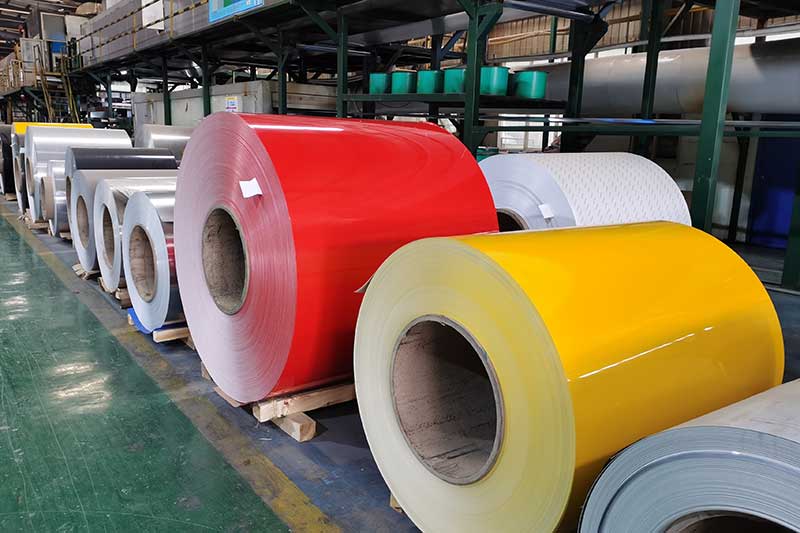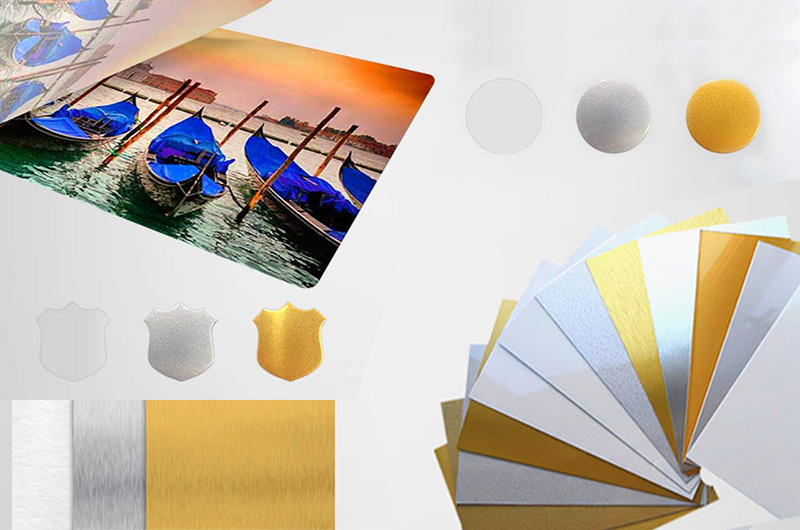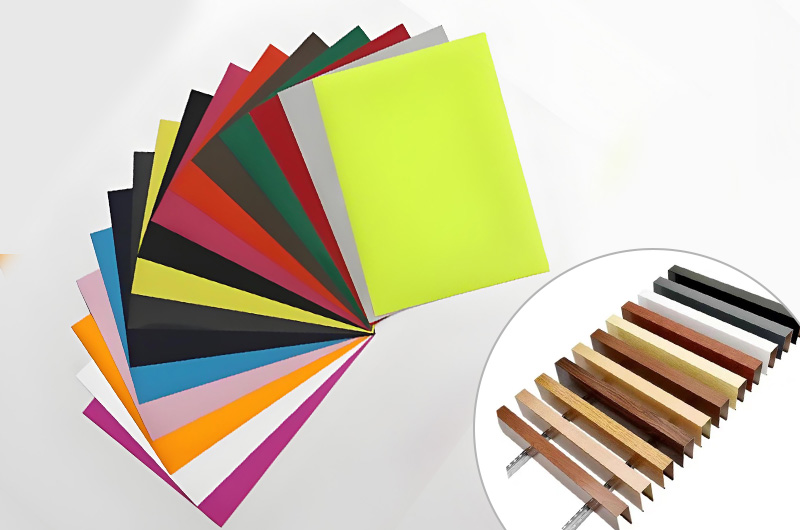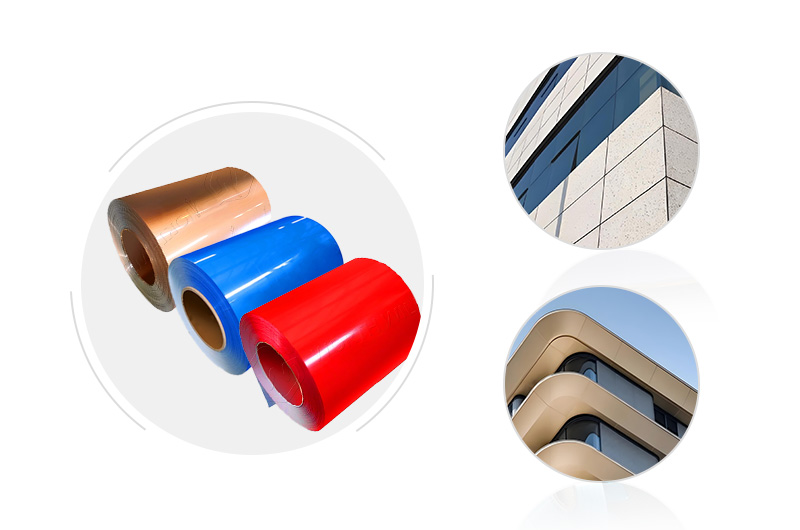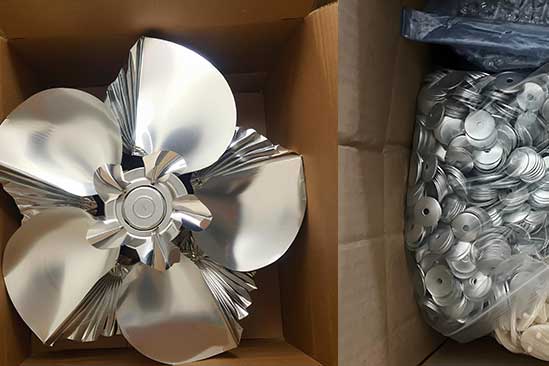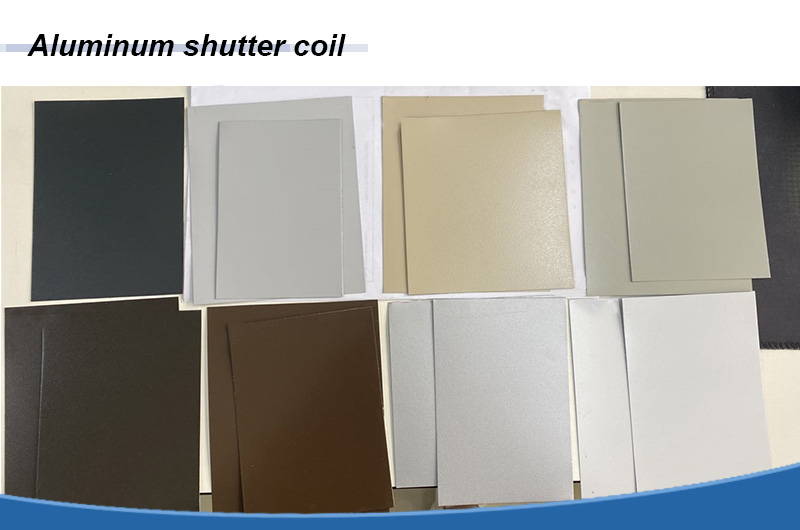3003 vs. 5052 Aluminum
3003 aluminum and 5052 aluminum are two of the most widely used non-heat-treatable alloys in global manufacturing. For engineers, procurement managers, and fabricators, choosing between them is a classic dilemma. They look identical, but choosing the wrong one can lead to structural failure or unnecessary costs.
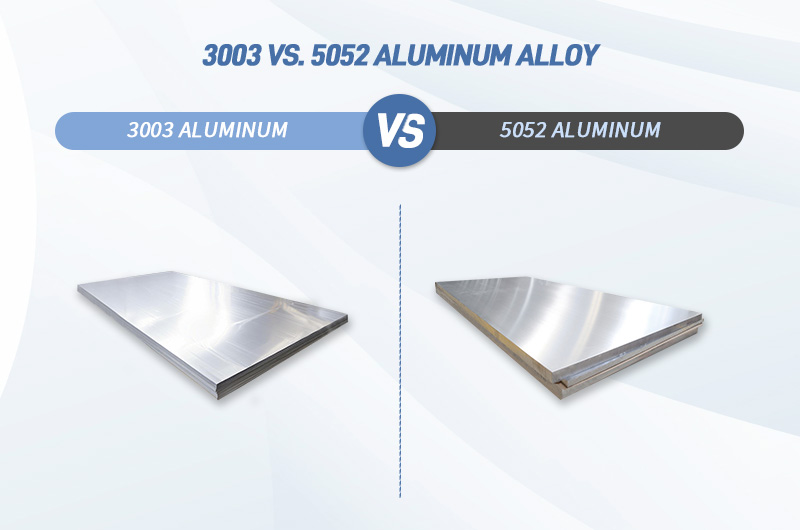
The bottom line:
- 3003 Aluminum is the "General Purpose" champion, known for its formability and economy.
- 5052 Aluminum is the "Structural" expert, famous for its high strength, fatigue resistance, and marine-grade corrosion protection.
This guide breaks down the differences based on ASTM, ASM, and industrial standards, covering chemical composition, mechanical limits, fabrication properties, and cost to help you make the right choice.
At a Glance: The 1-Minute Comparison
If you are in a rush, this table highlights the critical differences to help you decide immediately, For details, please click (Data Comparison).
| Feature | 3003 Aluminum (Al-Mn) | 5052 Aluminum (Al-Mg) | Winner |
| Primary Element | Manganese (Mn) | Magnesium (Mg) | - |
| Strength | Moderate | High (30-50% stronger than 3003) | 5052 |
| Fatigue Resistance | Average | Excellent (Resists vibration) | 5052 |
| Formability | Excellent (Deep Drawing) | Good (Bending), but less drawability | 3003 |
| Corrosion Resistance | Good (Atmosphere/Fresh Water) | Superior (Saltwater/Marine) | 5052 |
| Anodizing Finish | Poor (Yellowish/Uneven) | Excellent (Clear, uniform finish) | 5052 |
| Cost | Lower (Budget-friendly) | Higher (Premium price) | 3003 |
| Typical Use | Utensils, Heat Exchangers, Siding | Boat Hulls, Fuel Tanks, Enclosures | - |
The Chemistry: The Source of Performance
Neither alloy can be hardened by heat treatment (quenching); they rely solely on strain hardening (cold working). Their performance differences stem entirely from their alloying elements.
3003 Aluminum: The Manganese Effect
- Series: 3xxx (Al-Mn).
- Composition: ~1.2% Manganese, with trace Copper (0.05-0.2%).
- Physics: Manganese increases strength over pure aluminum by about 20% without sacrificing ductility. The trace copper improves thermal stability but makes it slightly less corrosion-resistant than the 5xxx series in saltwater.
- Superpower: Thermal Conductivity (180 W/m-K). It transfers heat very efficiently, making it the standard for car radiators and HVAC systems.
5052 Aluminum: The Magnesium Boost
- Series: 5xxx (Al-Mg).
- Composition: ~2.5% Magnesium and ~0.25% Chromium.
- Physics: Magnesium is a potent solid-solution strengthener. It modifies the crystal lattice to significantly boost tensile strength and hardness. Chromium acts as a grain refiner, preventing stress corrosion cracking.
- Superpower: Fatigue Strength. Unlike 3003, 5052 can withstand cyclic loading (vibration) without cracking, which is why it is essential for vehicle fuel tanks.
Mechanical Properties: Understanding Tempers
Since these alloys aren't heat-treated, their "Temper" (H-state) defines their mechanical limits.
The "O" Temper (Annealed/Soft)
- 3003-O Aluminum: The king of ductility. With an elongation of ~28%, it is perfect for deep drawing (e.g., spun cookware, soda cans). It flows easily into dies without tearing.
- 5052-O Aluminum: Stronger than 3003-O (190 MPa vs 110 MPa UTS) but with slightly lower elongation (~22%). It is used for complex shapes that still require structural integrity.
The "H" Tempers (Strain Hardened)
This is where the two alloys diverge significantly.
- 3003 (H14/H24 - Half Hard): Grains strength but loses ductility rapidly. In full hard states (H18), 3003 becomes brittle (elongation drops to ~1%) and is prone to cracking if bent.
-
5052 (H32/H34 - Stabilized):
- 5052 maintains excellent plasticity even when hardened. A 5052-H32 sheet has a tensile strength of ~230 MPa yet retains decent bendability.
- 5052 has a fatigue limit of ~110 MPa, whereas 3003 is around ~50 MPa. If your part shakes, rattles, or vibrates, you must use 5052.
The Fabrication Floor: Processing Guide
How do they behave on the CNC machine, press brake, or welding table?
Machinability (CNC & Cutting)
- The Issue: Both are relatively soft aluminum grades. They tend to be "gummy, " creating long, stringy chips that can wrap around tooling or cause built-up edge (BUE).
- The Comparison: 5052 is slightly better. Because it is harder, the chips break a bit easier than the ultra-soft 3003.
Tip: Use high rake angles, polished inserts, and plenty of coolant for both.
Bending & Forming
- 3003 Aluminum: Extremely forgiving. You can often bend 3003-H14 to a zero radius (hem) without cracking.
- 5052 Aluminum: Requires caution. While O-temper bends easily, harder tempers (H32/H34) require a minimum bend radius (usually 1t to 1.5t, where t=thickness) to avoid cracking along the bend line.
Welding
- Both are excellent. They are readily weldable via TIG (GTAW) and MIG (GMAW).
- 5052 Aluminum structural welds are stronger. 5052 is typically welded with 5356 filler wire.
- 3003 Aluminum is widely used for brazing (e.g., in heat exchangers), whereas 5052 is not easily brazed due to its magnesium content forming oxides.
Surface Finish (Anodizing)
- 3003 Aluminum: Not for aesthetics. The manganese content turns the oxide layer a muddy grey, yellow, or brown color. It is fine for protection, but terrible for decorative consumer electronics.
- 5052 Aluminum: Anodizing Grade. It takes a clear, hard, and uniform oxide layer. If you need a color-dyed finish (like a blue MacBook chassis or a black amplifier faceplate), 5052 is the standard choice (alongside 6061).
Corrosion Resistance: Land vs. Sea
3003: The Atmospheric Choice
3003 offers excellent resistance to general atmospheric corrosion, fresh water, and organic acids (food). This is why it is the industry standard for cooking utensils and chemical equipment handling nitric acid. However, it is susceptible to pitting in saltwater.
5052: The Marine Grade
5052 is chemically formulated to resist saltwater and industrial atmospheres. It is virtually immune to corrosion in marine environments, making it the default material for boat hulls, docks, and offshore equipment.
Cost Analysis: Is the Upgrade Worth It?
- 3003 (The Budget Option): Manganese is cheaper than magnesium, and 3003 is easier to roll into sheets. It is generally 10-15% cheaper than 5052.
- 5052 (The Premium Option): The higher strength and work-hardening rate make it harder to manufacture at the mill (more roll wear).
Verdict: If your part is a static cover plate inside a dry machine, paying for 5052 is a waste of money. If the part holds weight or goes outside, the extra cost of 5052 is a necessary insurance policy.
Scenario Selection Guide
To ensure you pick the right alloy, match your project to these scenarios:
Choose 3003 Aluminum If:
- Heat Transfer is Key: Radiators, heater cores, evaporator coils.
- Deep Drawing Required: Making spun pots, deep cans, or cowlings.
- Food Contact: Commercial kitchen backsplashes, pizza pans.
- Low Load / Static: Signage, decorative trim, sheet metal ductwork.
- Brazing: You intend to braze the components.
Choose 5052 Aluminum If:
- Marine Environment: Anything touching or near saltwater.
- Vibration & Fatigue: Vehicle chassis, fuel tanks, engine brackets, bus skins.
- Electronics Enclosures: Computer cases, audio equipment (especially if anodized).
- High Strength Sheet Metal: Structural panels that must be thin but strong.
- Pressure Vessels: Hydraulic tubes, air tanks.
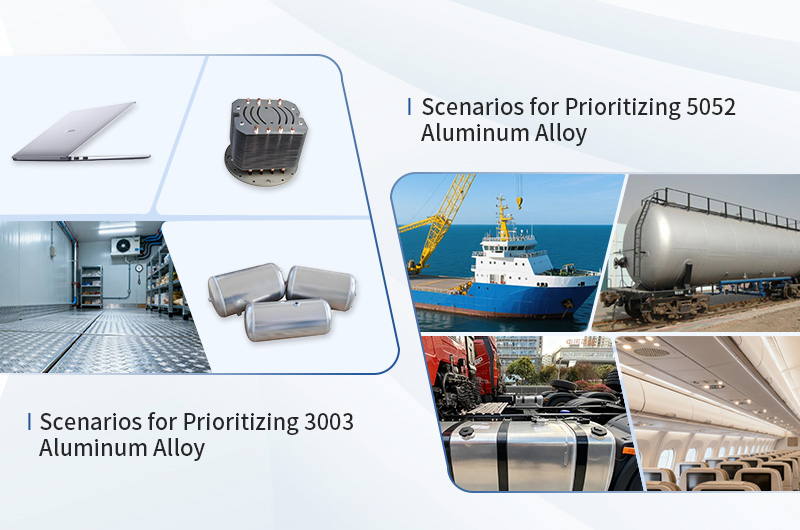
Frequently Asked Questions (FAQ)
Q: Can I weld 3003 to 5052?
A: Yes. You should typically use 5356 filler rod. The weld will be sound, but remember that the joint strength will be limited by the weaker base material (the 3003 side).
Q: Why did my 5052 aluminum crack when bending?
A: You likely used a temper that was too hard (like H34 or H38) or a bend radius that was too tight. For 5052-H32, ensure your inside bend radius is at least equal to the material thickness (1t). For 3003, you can often bend tighter.
Q: Is 5052 strong enough for structural framing?
A: For sheet metal structures, yes. However, if you need extruded bars or beams for a load-bearing frame, you should look at 6061-T6, which is significantly stronger than both 5052 and 3003.
Q: Which one is lighter?
A: 5052 is technically lighter. Its density is 2.68 g/cm³, compared to 3003's 2.73 g/cm³. While 5052 is about 1.8% lighter, this is usually negligible unless you are building an aircraft or a racing boat.
Data comparison (for your reference)
Annealed Temper (O Temper)
| Performance Indicator | 3003-O | 5052-O | Key Difference |
| Ultimate Tensile Strength (UTS) | 110 MPa | 190 MPa | 5052 is 73% stronger |
| Proof Strength | 40 MPa | 79 MPa | 5052 is 98% stronger |
| Brinell Hardness (HB) | 28 HB | 47 HB | 5052 is 68% harder |
| Elongation at Break | 28% | 22% | 3003 has 27% better ductility |
| Fatigue Strength (R=0) | 50 MPa | 110 MPa | 5052 is 120% more fatigue-resistant |
As-Fabricated Temper (H112 Temper)
| Performance Indicator | 3003-H112 | 5052-H112 | Key Difference |
| Ultimate Tensile Strength (UTS) | 110 MPa | 200 MPa | 5052 is 82% stronger |
| Proof Strength | 45 MPa | 89 MPa | 5052 is 98% stronger |
| Brinell Hardness (HB) | 32 HB | 55 HB | 5052 is 72% harder |
| Elongation at Break | 15% | 9.5% | 3003 has 58% better ductility |
Cold-Worked Temper (H1 Series)
| Performance Indicator | Temper | 3003 | 5052 | Key Difference |
| UTS | H12 | 130 MPa | 230 MPa | 5052 is 77% stronger |
| H14 | 160 MPa | 250 MPa | 5052 is 56% stronger | |
| H16 | 180 MPa | 270 MPa | 5052 is 50% stronger | |
| H18 | 210 MPa | 300 MPa | 5052 is 43% stronger | |
| H19 | 240 MPa | 320 MPa | 5052 is 33% stronger | |
| Elongation at Break | H12 | 11% | 9.4% | 3003 has 17% better ductility |
| H14 | 8.3% | 8.0% | Nearly identical | |
| H16 | 5.2% | 3.7% | 3003 has 41% better ductility | |
| H18 | 4.5% | 3.1% | 3003 has 45% better ductility | |
| H19 | 1.1% | 1.1% | Identical | |
| Fatigue Strength (R=0) | H12 | 55 MPa | 130 MPa | 5052 is 136% more resistant |
| H14 | 60 MPa | 100 MPa | 5052 is 67% more resistant |
Cold-Worked + Partial Annealed Temper (H2 Series)
| Performance Indicator | Temper | 3003 | 5052 | Key Difference |
| UTS | H22 | 140 MPa | 230 MPa | 5052 is 64% stronger |
| H24 | 160 MPa | 250 MPa | 5052 is 56% stronger | |
| H26 | 180 MPa | 270 MPa | 5052 is 50% stronger | |
| H28 | 210 MPa | 310 MPa | 5052 is 48% stronger | |
| Elongation at Break | H22 | 7.7% | 9.3% | 5052 has 21% better ductility |
| H24 | 6.0% | 8.0% | 5052 has 33% better ductility | |
| H26 | 3.1% | 3.8% | 5052 has 23% better ductility | |
| H28 | 1.7% | 2.6% | 5052 has 53% better ductility | |
| Fatigue Strength (R=0) | H24 | 68 MPa | 110 MPa | 5052 is 62% more resistant |
Data Source: Aluminum Association Standards & Data 2024, https://asm.matweb.com/,https://www.makeitfrom.com/ , https://www.matweb.com
Conclusion
The battle between 3003 vs. 5052 isn't about which is "better, " but which fits the application.
- Select 3003 for general sheet metal work, HVAC, and cooking applications where formability and low cost are paramount.
- Select 5052 for high-performance sheet metal parts requiring high strength, fatigue resistance, marine durability, or a premium cosmetic finish.
By matching the alloy properties to your specific environmental and mechanical requirements, you ensure a product that is both durable and cost-effective.
